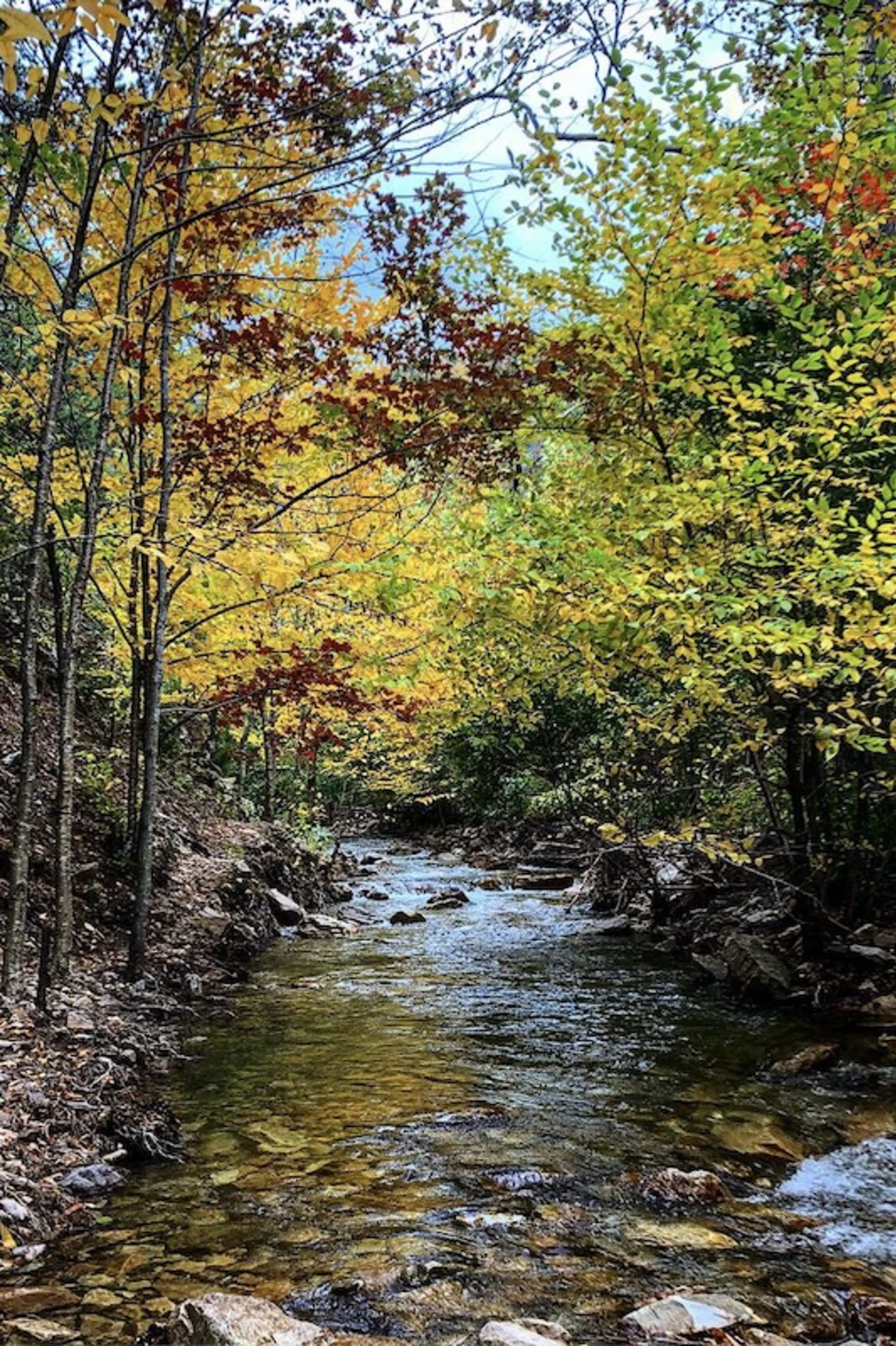The good news is that it’s not that difficult to find some of the best Virginia Brook Trout Streams. There are over 400 streams or bodies of water that hold these fish. However, if you don’t know what you’re looking for then it can be overwhelming just looking at a map and selecting a river.
Below, we’ve gathered five of the best brook trout streams in the state. So, lace up your wading boots, tie on some 5X tippet and grab your dries because we’re taking a deep dive on the best Virginia brook trout streams.
Rapidan River
This is easily the most popular brook trout stream in the state. There is even a fly named after it, the Mr. Rapidan. The portions of the river that are located inside the park are home to native brook trout. These sections are catch and release only.
The river is located about an hour and a half from DC. So, if you plan on fishing here on the weekend during the peak seasons then expect to rub a few elbows with other anglers. Despite not being very secluded this river produces some solid fish.
Double-digit days aren’t an issue with most fish being in the 7-9″ range. Larger fish will be closer to 12″, but those will be rarer.
Laurel Fork
If you want ease and convenience then this is not the river for you. Before you can even throw a fly you need to hike back three miles. With that hike though you’re getting 9 miles of stream to fish, and a slim to none chance of running into another angler.
Laurel is also a little bit bigger than other freestone streams in the state with its average width being around thirty feet. Meaning, you can keep the 6′ glass rod at home if you prefer.
It’s situated near the WV border so depending on your location this could be a bit of a drive. If it is then I would recommend making a day of it and packing some water and food for a shore lunch.
The stream is known for holding some large brookies so make sure you have a net handy.
Rose River
Overall, this is a solid brook trout stream. It’s reasonably tucked away so you won’t get too many people fishing it, but it’s also easy to access. Only a 3/4 mile hike from the parking lot to the stream and it’s on a well-maintained path.
There’s nothing too spectacular about the river, but there’s also nothing bad about it either. It has a solid population of natives, easy to get to with just enough seclusion. The banks of this river are also pretty open. Making them easy for casting.
Hughes
Located in the Shenandoah National Park, the very beginning of the Hughes has some wonderful plunge pools that would tempt any angler to throw in a fly. These spots may look great but they’ve been hit pretty hard and it’s recommended that you hike further down the trail.
Further up the trail, the river is loaded with deep plunge pools that are full of brookies. Most will be in the standard 7″ range with the occasional double-digit fish.
It’s a wonderful river that is definitely worth the trip and could arguably be one of the best Virginia brook trout streams.
Jeremy’s Run
The trail that runs alongside the stream is maintained very well and will provide you with easy hikes. Also, it makes it much more difficult to get lost. Perfect for the angler who doesn’t want to bushwack their way in and around the mountains.
The depth of the stream all depends on the rainfall and snowmelt. Later in the year, it can become low and this will hurt the fishing. During these times you’ll only be able to fish the deeper pools. These will hold the biggest fish in the river.
What Type of flies Work best on Virginia Streams?
This all depends on the time of year. Early spring you’ll be throwing a lot of nymphs. Pheasant tails and copper johns are two of my favorites. As the weather warms you can start to throw dries exclusively, or drop a nymph off the shank of the hook. Elk hair caddis, parachute Adams, and Mr. Rapidan are all great dries.
During the summer you can continue throwing those same dries, but beetles and hoppers will sometimes outfish them. After the rain, you can drop a squirmy or san juan off the shank, or even a sinking ant.
Jigging or stripping in wooly buggers can work well, but I often only use these when I’m having trouble finding fish or if I feel like mixing it up.
Rod, Reel, and Line Size?
A 7′ 6″ 3wt rod will work great on just about every freestone brookie stream in the state. Some spots are more narrow and will require a 6′ rod, where on wider rivers you could get away with using a 9′. It all comes down to personal preference.
Always pair your line size to the size of the rod. 3wt or smaller is perfect for throwing those tiny flies and landing them softly on the water. A floating line is all you’ll need. If you encounter a pool on a brookie stream deep enough for a sinking line then please comment below and tell me where it is.
Final Thoughts
Virginia has more fishable brook trout water than all of the other southeastern states. Making it a real possibility that an angler could never fish all of the possible water in the state in their lifetime. Have you fished any of these bodies of water? Any spots I missed?



